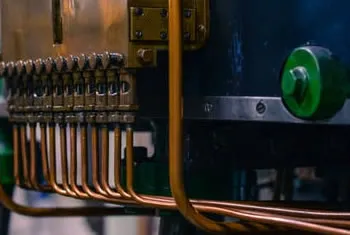法兰德斯艺术(Flemish art)
指法兰德斯15、16世纪和17世纪初期的艺术,以生气蓬勃的写实主义和高超的技术造诣而着称。法兰德斯画派的先驱者一般都住在勃艮地大公国的第一个首都第戎。这些大公在1363~1482年间建立了强大的法兰德斯和勃艮地联盟。腓力三世(1419~1467年在位)迁都於布鲁日,1425年正式任命艾克(1390~1441)为宫廷画师兼侍从。他的画作代表着早期法兰德斯绘画的开端,又象徵着它的全盛时期。15世纪末,艾克後一代的画家并未一味仿效他,而是面向义大利以求得画面形象结构的发展。魏登、赫里斯特斯、包茨、胡斯、梅姆灵和戴维等人的画作虽着重创新,但其视觉艺术效果却与艾克相去甚远。16世纪,在博斯的影响下,老勃鲁盖尔将当时的残酷性反映在他的那些生动地描绘了农民生活的作品里。17世纪伟大的大师鲁本斯精通油画艺术,他的成熟的寓言风格与巴洛克时期的奢华趣味完全吻合。亦请参阅early Netherlandish art。
English version:
Flemish art
Art of the 15th to early 17th century in Flanders. The precursors of the Flemish school were located in Dijon, the first capital of the dukes of Burgundy, who established a powerful Flemish-Burgundian political alliance that lasted from 1363 to 1482. Philip III the Good moved the Burgundian capital to Bruges and in 1425 hired Jan van Eyck as his painter. The next generation of artists built on van Eyck's heritage and, toward the end of the 15th century, began looking to Italy for pictorial inspiration. Rogier van der Weyden, Petrus Christus, Dirck Bouts, Hugo van der Goes, Hans Memling, and Gerard David brought innovation, but little of their work compared with van Eyck's artistic vision. In the 16th century, Pieter, the Elder Bruegel, under the influence of Hieronymus Bosch, depicted peasant life with an eye for the grotesque. The great master of the 17th century, Peter Paul Rubens, demonstrated unrivaled skill in oil painting; his style epitomized the Flemish baroque period. See also Early Netherlandish art.












